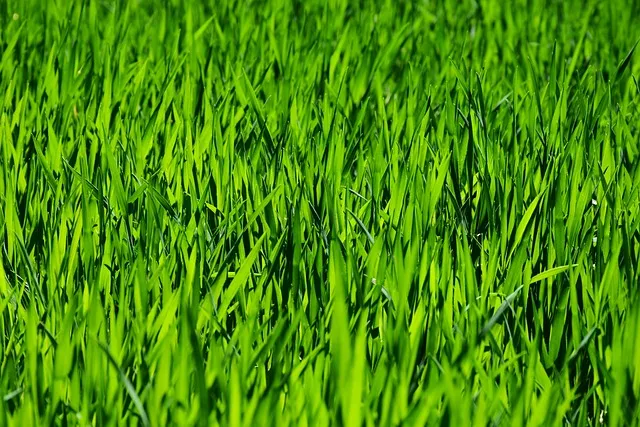Lawn care and landscaping go beyond surface-level maintenance; they require a comprehensive strategy for a truly healthy and visually appealing lawn. Expert turf management encompasses advanced irrigation systems, customized fertilization plans, and soil testing to maintain ideal pH levels, prevent diseases, and manage pests in a sustainable manner through Integrated Pest Management (IPM). Aeration and overseeding are essential for improving grass health and durability. These practices, along with regular soil management and balanced nutrient applications, ensure a lush, vibrant lawn that remains consistent throughout the year, resisting weeds and pests while adapting to seasonal changes. This approach not only enhances the aesthetic appeal of your outdoor space but also prioritizes ecological sustainability and client satisfaction by employing environmentally friendly practices in lawn care and landscaping.
Embark on a journey through the nuanced world of lawn care and landscaping, where expert turf management techniques elevate your green spaces from ordinary to extraordinary. Our comprehensive guide delves into optimizing lawn health, mastering the art of balanced soil for lush, vibrant landscapes, and implementing integrated pest management strategies tailored for healthy turf. Uncover the secrets that transform your yard into a thriving ecosystem with the best practices in lawn care and landscaping.
- Optimizing Lawn Health with Expert Turf Management Techniques
- The Art of Balanced Soil: pH Levels and Nutrient Management for Lush Landscapes
- Integrated Pest Management Strategies in Lawn Care and Landscaping
Optimizing Lawn Health with Expert Turf Management Techniques

Maintaining a lush, vibrant lawn requires a comprehensive approach to lawn care and landscaping that goes beyond routine mowing and watering. Expert turf management techniques are essential for optimizing lawn health and achieving a landscape that stands out in any neighborhood. These professionals employ a range of strategies, from precise irrigation systems to tailored fertilization programs, ensuring every square inch of your yard receives the nutrients it needs. They also understand the importance of soil analysis to correct pH imbalances and manage potential disease or pest infestations proactively. By implementing integrated pest management (IPM) practices, they can control insects and weeds without over-relying on chemicals, preserving the environment while keeping your lawn pristine. Furthermore, these experts are adept at aerating and overseeding to enhance turf density and resilience, creating a lush, green carpet that withstands foot traffic and harsh weather conditions. Lawn care and landscaping are not one-size-fits-all endeavors; expert turf management tailors these practices to the specific needs of your lawn, ensuring optimal results throughout all seasons.
The Art of Balanced Soil: pH Levels and Nutrient Management for Lush Landscapes

Maintaining a lush and vibrant landscape requires a deep understanding of soil conditions, particularly the balance of pH levels and the strategic management of nutrients. Expert lawn care and landscaping professionals emphasize the importance of optimal pH levels for soil fertility; a pH between 6.0 and 7.5 is typically ideal for most grass types, as it ensures the efficient uptake of essential nutrients. Soil testing is a fundamental practice in lawn care, allowing for precise adjustments to pH through the application of lime or sulfur when necessary. Beyond pH, a well-balanced soil contains all the necessary nutrients that grass needs to thrive. Nitrogen, phosphorus, and potassium are macronutrients that support leaf growth, root development, and overall plant health, respectively. Additionally, micronutrients like iron, manganese, and zinc play a critical role in the enzymatic processes within the grass, influencing its color and resilience to environmental stressors. Lawn care and landscaping experts often use a combination of organic and inorganic fertilizers to ensure a balanced nutrient supply throughout the growing season. Regularly scheduled fertilization, coupled with proper irrigation practices, creates an environment conducive to a dense, healthy turf that can effectively compete with weeds and resist disease and pest pressures. By understanding and carefully managing these aspects of soil health, lawn care and landscaping professionals can help achieve the enviable, lush landscapes that property owners desire.
Integrated Pest Management Strategies in Lawn Care and Landscaping

Integrated Pest Management, commonly known as IPM, is a strategic approach to lawn care and landscaping that focuses on long-term prevention or solution of pest problems by integrating various methods. This sustainable approach avoids overly relying on chemical pesticides, instead employing a combination of techniques such as biological control, habitat manipulation, physical/mechanical tactics, and the judicious use of pesticides. By monitoring and identifying pests early, turf managers can implement less hazardous pest control methods. This not only protects the environment but also ensures the safety of humans, pets, and beneficial organisms while maintaining healthy, vibrant lawns and landscapes.
Effective lawn care and landscaping requires a deep understanding of the local ecosystem, including the types of pests that are likely to affect turfgrass and ornamental plants, as well as the most suitable IPM strategies to manage these pests. Turf management expertise in IPM encompasses knowledge of pest life cycles, ecology, and behavior, which allows for the development of a targeted approach to control pests before they become problematic. This proactive strategy minimizes damage to turf areas and landscapes, reduces the need for chemical interventions, and promotes overall ecological health. By adopting IPM practices, landscaping professionals can provide sustainable, effective solutions that benefit both the environment and clients’ outdoor spaces.
Effective lawn care and landscaping hinge on the mastery of turf management, a discipline that encompasses optimizing soil balance, pest control, and overall lawn health maintenance. By implementing expert turf management techniques as outlined in this article, readers can achieve lush, vibrant landscapes that withstand environmental challenges and pests. Understanding the critical role of soil pH levels and nutrient management has never been more important for maintaining a healthy lawn ecosystem. Similarly, integrated pest management strategies provide a robust framework for protecting turf from damaging infestations. Armed with this knowledge, homeowners and professionals alike can tackle the task of landscaping with confidence, ensuring their outdoor spaces remain both beautiful and resilient.
